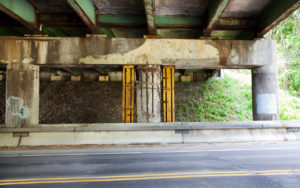 After last month’s meeting with Democratic leaders in the House and Senate, President Trump’s $1 trillion infrastructure plan has become $2 trillion. As the legislature continues to digest the plan, many are beginning to raise questions about the plan’s viability. The fundamental issue is a predictable one–$2 trillion is a big number, and legislators are having trouble deciding how to pay for it.
After last month’s meeting with Democratic leaders in the House and Senate, President Trump’s $1 trillion infrastructure plan has become $2 trillion. As the legislature continues to digest the plan, many are beginning to raise questions about the plan’s viability. The fundamental issue is a predictable one–$2 trillion is a big number, and legislators are having trouble deciding how to pay for it.
Unfortunately, $2 trillion is not nearly big enough—even if the legislature were to come together and agree on a method of budgeting for the $2 trillion, it would cover less than half of the country’s critical, short-term infrastructure needs. The American Society of Civil Engineers has estimated that the U.S. needs to spend $4.5 trillion by 2025 just to ensure the continued operation of our infrastructure. That number is the minimum to keep limping along—it does not contemplate upgrades to address long-term sea-level rise and climate change or the new “green” infrastructure projects that are desired by many, such as the six new mass-transit corridors included in Miami-Dade County’s SMART Plan.
Ultimately, we cannot rely on government alone to meet our infrastructure needs. Although the $2 trillion plan would be extremely helpful, it is not alone sufficient, and government funding will need to be used to leverage new private investment in order to solve this issue (there is over $200 trillion in private capital invested globally, and that capital is constantly searching for good investments). Fortunately, public/private partnerships backed by private investors are a proven model for delivering critical infrastructure improvements. P3s have become a dominant model in several countries, including Canada, and they will need to become dominant in the U.S. as well if we are ever to transition from talking about funding infrastructure to actually funding infrastructure.

